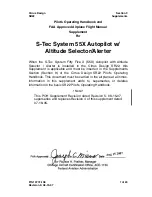
Installing the
“Fireball 2001”
Quad Rod Heat Exchanger
This installation requires a tank with a side mounted Pressure Relief Valve port that is at least 36” above the bottom drain
valve and/or may require the tank to be raised and supported off the floor. Some soldering and plumbing skill is required.
Connect the Collector feed line to the pump compression union (CU). Connect
the Collector hot return line to the Glycol port “B” CU.
Before insulating the
lines, pressurize the solar loop with water and thoroughly test for leaks. See
separate sheet for instructions on pressure testing and Charging the Glycol Loop.
Detail of the insulated top part of the Quad rod. Reconnect the PTRV to its drain line.
Purge remaining air out of the Glycol loop by slowly opening the Glycol Loop Air Bleed
Valve “B1” until a drop of fluid comes out and retighten.
Remove the tank drain and install
Port “D” fitting. Solder this to Port
“E” at the Bottom of the Quad Rod.
“E” must be at or below the level
of “D.” This allows cooler water to
flow into the large water
pipe which is solar heated by the 4
“double walled” Glycol tubes
going through its center. Port “F”
collects the Glycol and feeds it on
its way past the preinstalled Glycol
Chargin g Valves, Pump and
Expansion Tank to be heated by
the Collector.
Next you will need to install the
“Expansion Tank” and pump.
A brass union is supplied with
the pump. The pump plugs into
the Differential control or the
optional PV pump is simply
connected to the PV panel
wires. Locate the Differential
control in a convenient place.
It is often mounted onto the
tank.
Remove the Pressure/Temperature relief valve (PTRV) and install the Port “A”
fitting. The “Quad Rod” is installed Vertically between the PTRV Port “A” and the
tank drain valve, Port “D “.
Of vital importance is that Port “C” be at or below the
level of Port “A” so heated water can naturally RISE into the water tank from Port
“C” through Port “A”.
Solder Port “A” to Port ”C” and reinstall the PTRV in the
end of Port “A” fitting. The Glycol loop Air Bleed Valve, “B1” is used later to let
any remaining air out of the “Propylene Glycol” charged solar loop.
This view shows detail of insulation.
Use tie wraps to secure insulation.
Connect the collector sensor to the
Differential control. Very low on the
tank, under an access panel, tightly
squeeze the tank sensor between the tank
insulation and the tank. make the wire
connection between the tank sensor and
the Differential control.
Pressure Relief
Valve Port “A”
Glycol Loop Air
Bleed Valve “B1”
Heated water
rises out of the
top of Quad
Rod Port “C”
into the tank
Glycol Port
“B”
from Collector
heats 4 tubes
inside the large
Tank Drain Port “D”
feeding cool water to
Quad Rod Pipe Port
Glycol Loop Port “F” collects
cooled Glycol returning to Collector.
Glycol Charge Valves:
V1, Fill Valve
V3, Issolation Valve
V2, Purge Valve
To Pump
Pump
Expansion
Tank
Location for tank
sensor. Shove sensor
between insulation, tight
against water tank shell.
Summary of Contents for Fireball 20014
Page 2: ......




































